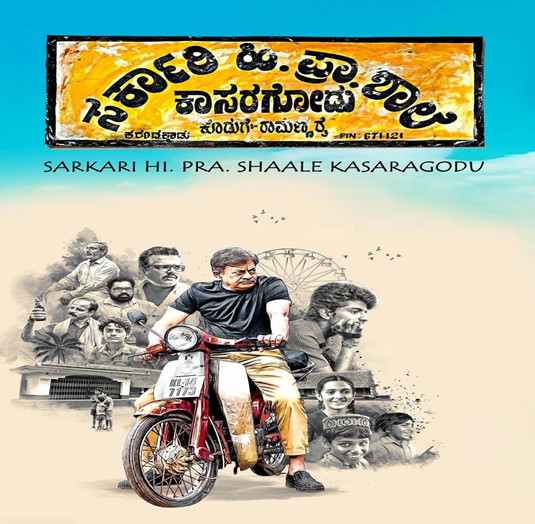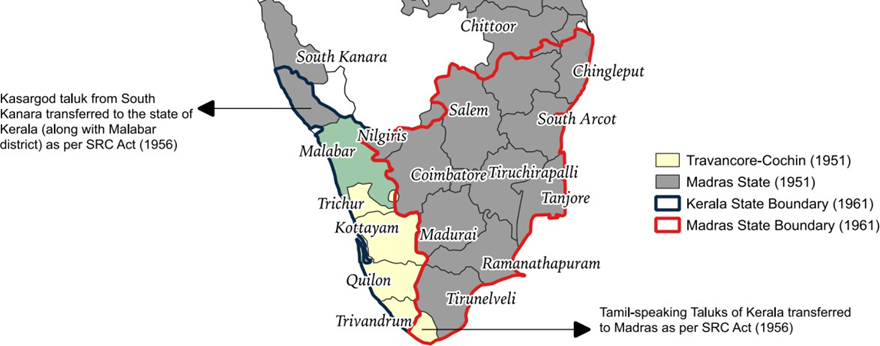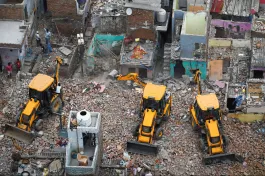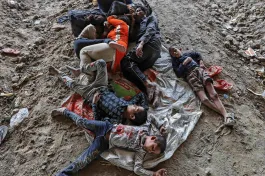Earlier this month, on 1 November, Kerala, like several other states, celebrated its formation day. The day recalls the State Reorganization Act of 1956, which distributed India’s territories on the basis of dominant regional languages. Romanticised, idealised, and elated references to Malayalam and Malayali culture abound in the day's festivities.
The need to study, practice, and propagate the state language is reinforced during this day (and week), often vis-à-vis the colonial language, English, or Hindi, one of India’s official language which is often, wrongly, touted as the ‘national language’. The assertion of regional languages is emphasised as opposed to these two ‘outsiders’.
The other side of this valorisation of the state’s official language that it portrays and celebrates a homogenous idea of the state’s culture and linguistic landscape, ignoring the varieties of dialects within the language and the minority languages in the borderlands.
Lost in this discourse is a recognition of the vitality of the minority languages in the geographical margins of the state and the several Malayalams that are neither acchadi bhasha (‘print’ Malayalam, considered 'standard') nor aadhya bhasha (the variety considered to be 'culturally superior', read upper caste).
The commonly used dialect in mainstream Malayalam cinema was either the Valluvanadan dialect from northern Kerala, reflecting that of Hindu upper-caste Namboodiri-Nair families, or the language of upper-class Syrian Christian families in Kottayam...
These elisions are more pertinent in the context of Malayalam being declared in 2013 as a classical language. Anointed with this status, the official language gains another level of hierarchy and hegemony, leading one to wonder about the question, 'classical' status as opposed to what?
The renowned linguist, historian, and archivist, G.N. Devy, has recently noted how “the concept ‘classical’ indicates not just the longevity of an ancient language; it is, at the same time, a social class marker; The term ‘classical’ holds a long history of discrimination.” This discrimination happens in many ways ranging from systemic suppression of minority languages and varieties of the regional language to the perceptions that become what Gramsci would call the “common sense” in a state. It is a vicious cycle where prevalent practices emerge from underlying perceptions, and perceptions, in turn, reinforce those practices, making the ‘different’ utterances to be deemed as “non-standard” and “inferior.”
This works like Franz Fanon’s explanation of the “self/other” in the context of colonisation, where the “self” is defined in relation to and in opposition to the “other” and vice versa, and the inferiority becomes internalised in the “other” because of the reinforcement of the superiority of the “self.” In the context of the different varieties and dialects, as well as minority languages, a clear alienation happens with the celebration and reinforcement of the “state” language.
***
Literature and cinema have played a significant role in establishing 'superior' varieties of Malayalam. The commonly used dialect in mainstream Malayalam cinema was either the Valluvanadan dialect from northern Kerala – reflecting that of Hindu upper-caste Namboodiri-Nair families and widely popularised by the writings of M.T. Vasudevan Nair – or the dialect of upper-class Syrian Christian families around Kottayam, the southern Kerala town which was an early centre of media and publishing houses. The formal Kottayam variety of Malayalam is considered the 'standard' Malayalam.
To see the flip side, Kasargod is a good place to start. The northernmost district of Kerala, bordering Karnataka, Kasargod was part of the South Canara district of Madras before the linguistic reorganisation of states. Its character as a transition zone is reflected in a sobriquet sapta bhasha sangamabhoomi – where the seven languages mingle.
In popular Kerala culture, an inferior gaze towards Tamil as a minority language in Kerala was prevalent for many decades, until recently, with the popularity of the new wave of Tamil cinema. Yet, this hierarchical view was overlaid by caste.
The district has a significant number of speakers of Kannada, Tulu, Konkani, Beary, Urdu, Marathi, alongside Malayalam, During elections, political candidates deliver speeches in these multiple languages; an exclusive reliance on the state’s official language (classical or not) would only hinder effective campaigning.
Yet, Kasargod residents whose primary language is not Malayalam have long felt alienated. For the longest time, the district was perceived in Kerala as a place for 'punishment transfers', as if it were an un-liveable place.
Sarkari Hiriya Prathamika Shale-Kasargodu (2018), a popular Kannada film, paints the scene well, taking as its theme a Kerala-government-run Kannada school in the district. As funds and resources get redirected towards promoting Malayalam, the school has to shut down. Though it is a fictional representation, the film accurately depicts how children from Kannada-speaking families are denied the opportunity to learn their mother tongue, and are forced to exclusively learn another language.

To the north of Palakkad is the Malabar region, with a distinct dialect of its own, shaped by a history of Arab interactions along the Malabar coast. This region has a rich tradition of historical accounts, songs, and literature in Arabi-Malayalam, a creole language.
The alienation is not just in terms of the language, but everything associated with the speakers of the language, including their culture, food habits, and social lives. Language is often used as a primary reason to make fun of the other as if they are less civilised. This is clear in the case of tribal languages, and the dialects of Kasargod, Palakkad, and Malappuram districts. The larger connotations of such jokes extend to the culture, landscape, and everything about the place because of the perception that the language and its speakers are alien.

Palakkad, like Kasargod, is a frontier district and has starkly different varieties of Malayalam spoken within its borders. The eastern parts, especially the border villages abutting Coimbatore and Nilgiris districts of Tamil Nadu, have a large Dalit and Adivasi population whose language and cultural shade into Tamil. The mainstream perception that their language, dialect, food habits, and rituals are “different” alienates the residents of these regions.
In popular Kerala culture, an inferior gaze towards Tamil as a minority language in Kerala was prevalent for many decades, until recently, with the popularity of the new wave of Tamil cinema. Yet, this hierarchical view is overlaid by caste. The parts of Palakkad dominated by Tamil Brahmins are perceived as a zone of superiority, whereas the Tamil cultures in the peripheries of Palakkad, and in the places outside of the brahmin agraharams are considered 'inferior'. This heterogeneity in the minority language (Tamil in Palakkad) brings out the nuances of the politics of micro-level diversities. To date, O.V. Vijayan is perhaps the sole author who has used the marginalised Palakkad dialects, in his phenomenal Khasakinte Ithihasam (1969).
To the north of Palakkad is the Malabar region, with a distinct dialect of its own, shaped by a history of Arab interactions along the Malabar coast. This region has a rich tradition of historical accounts, songs, and literature in Arabi-Malayalam, a creole language.
The distinctness of language and culture, and the presence of a large Muslim population have made Malappuram the target of blatant, unabashed Islamophobic narratives and comments in regional politics and popular culture. A recent controversy in Kerala is about the district formation of Malappuram in 1969. The role of the Muslim League and the Communist Party of India (Marxist) in their coalition government of 1969 is widely discussed, often highlighting what the critics call as 'balkanisation'. While many districts have been formed periodically in the decades after the formation of Kerala, none of them evoke the negative sentiments that shadow Malappuram.
***
It is only more recently, thanks to a new wave of Malayalam cinema, that more diverse varieties of Malayalams are portrayed in an endearing manner and popular culture has begun reflecting the reality of the lives of languages. The settings and landscapes have moved out of Valluvanad and Kottayam, and brought out the diversity of dialects, landscapes, and lived cultures.
The success of Malayalam films like Thondimuthalum Drisakshiyum (2017), Thingalazhcha Nishchayam (2021), and Nna Thaan Case Kodu (2022), which captured the language, landscape, and people of Kasargod, have ensured that the district has a positive presence in mainstream culture. Movies such as Sudani from Nigeria (2018), Shesham Mike-il Fathima (2023) highlight Malabar culture. The Kochi region has been represented in movies like Parava (2017) and Kumbalangi Nights (2019). The Great Indian Kitchen (2021) featured a song in the Paluva Bhasha of the Paraya community.
The recent years have seen a flowering of varieties of all 'Malayalams' in popular culture, such that the language used in the films of yore seem cringe-worthy for their artificiality as they spoke the 'achadi' or 'aadhya bhasha'.
These visual representations build on traditions in Malayalam writing. One of the most beloved writers and exceptions to the use of standard Malayalam in literature was Vaikom Muhammad Basheer, who wrote in the dialect and vocabulary of the people around him. With his quintessential blend of humour and profundity written in the colloquial variant of Malayalam of Muslim households, his writings are easily accessible to people of all age groups, of all tastes, irrespective of whether they enjoy literature or not. Basheer, in that sense, was the most democratic of writers. He made fun of the 'standard' Malayalam, when he recounted how his brother, Abdul Khader, a Malayalam teacher, critiqued Basheer's writing for having no vyakaranam (grammar), despite the ungrammatical brother being more widely read than the language master.
Another anecdote is when one of Basheer's books was completely edited and 'purged' of the 'non-standard' Malayalam and 're-written' in 'standard' Malayalam, Basheer burnt 500 copies of the book, and lit a beedi. This could be arguably the best criticism of the politics of the standard variant of a language.
In this context, it is pertinent to remember two other writers and their works: K.J. Baby’s Maveli Manram (1991) and Narayan’s Kocharethi (1998). Both the works document the lives and culture of Adivasis, but while Baby, a non-Adivasi writer used the Adivasi dialect, Narayan, the first published Adivasi writer in Malayalam, chose to use the 'standard' dialect for his first novel. Narayan said his choice of language was to ensure wider readability and acceptance. Baby, an activist working with the Adivasi community, was accepted and celebrated for his choice of subject and language.
These two examples show the politics of cultural capital, publication, market, reception, and readership to be the determining factors. However, Narayan was a pioneer in introducing Adivasi culture and life into mainstream Malayalam literature with his Kocharethi. This has paved the way for many more writers from different communities bringing out novels, poems, and songs, in their mother tongues, enriching the diversity of languages in Kerala. Sukumaran Chaligadda, Ashokan Marayoor, Mridula Devi, Dhanya Vengacheri, Shivalingan, D. Anil Kumar, and many others, ensure the representations of all the varieties of languages from the hills, valleys, coasts, and plains of Kerala, (reminiscent of the tinais of Sangam literature). All these geographies, cultures, and languages add up to the totality of the state of Kerala.
The recent years have seen a flowering of varieties of all Malayalams in popular culture, such that the language used in the films of yore seem cringe-worthy for their artificiality as they spoke the achhadi or aadhya bhasha. The celebration of Keralapravi, the birth of Kerala, should be celebrated in acknowledgement of the long strides of social growth it has made in accepting diversity and foster a mentality for diversities to coexist and thrive together.
Rajitha Venugopal teaches literary and cultural studies and Shivakumar Jolad teaches public policy, both at FLAME University, Pune.










